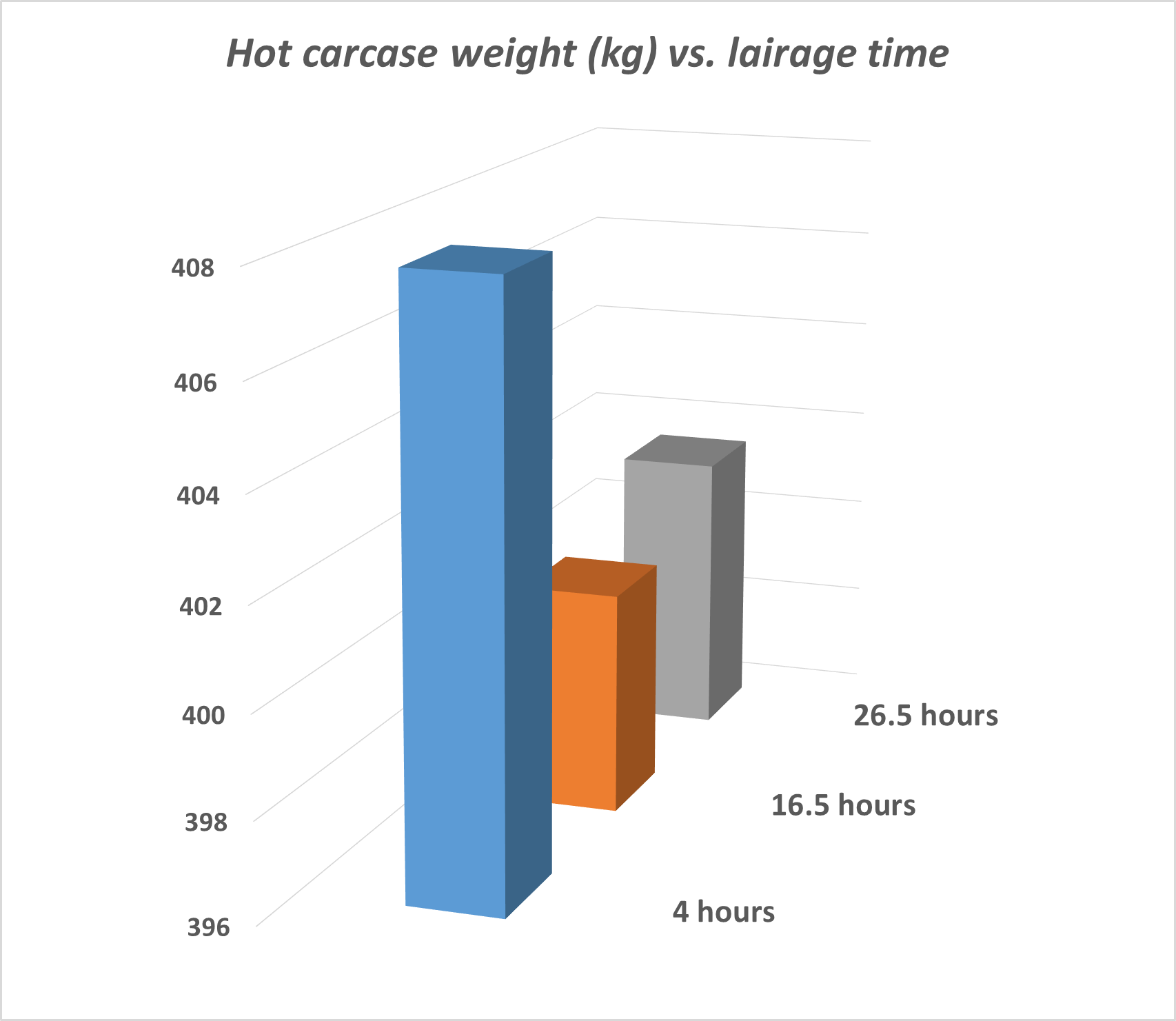
Effect of lairage time on hot carcase weight
New findings from Meat & Livestock Australia (MLA) funded research indicate short duration lairage can maximise productivity for the grainfed supply chain. The duration of time and location where cattle are housed between arrival at an abattoir and slaughter is termed 'lairage'. For Australian feedlot cattle, lairage duration is highly variable and can range between 2–36 hours, but more commonly ranges between 12–24 hours, and typically involves an overnight stay. Short duration lairage (SDL) of between three to four hours resulted in positive impacts on hot standard carcase weight (HSCW), hydration status and liver glycogen with no negative outcomes to meat quality and food safety parameters.
MLA engaged feedlot research scientist Dr Melissa George of Bovine Dynamics to examine the effects of three lairage times at a grainfed supply chain in Queensland. Mid-fed export cattle were randomised to treatment and transported for 350km or 5.5h to the abattoir. The project was completed in 14 replicates including 2,226 individual animals to compare three durations of lairage including short (four hours), mid (16.5 hours), and long (26.5 hours) duration.
Study findings
This project demonstrated that reduced lairage duration provided a significant benefit in the profitability across the supply chain, as well as improved animal welfare and sustainability outcomes.
SDL of four hours or less was found to:
yield a 7.4kg advantage in HSCW as compared to mid duration lairage
yield a 6.2kg advantage in HSCW as compared to long duration lairage
increase revenue by $40 to $48 per head assuming a $6.50/kg HSCW price
results in similar food safety parameters to mid and long duration lairage
increase hydration levels of cattle as evidenced by lower packed cell volumes
increase liver glycogen compared to mid and long lairage duration treatments, an indication of improved energy stores, given their shorter duration off feed.
Logistics opportunities
Current MLA surveys indicate that short duration lairage was practiced on approximately 15% of the grainfed beef turnoff during the 2023 financial year. Given this, there is a large opportunity for increased revenue by adopting the practice.
To examine the feasibility of short duration lairage, MLA engaged Beattie Consulting Services and Richmond Hill Agribusiness to interview 27 stakeholders from across the grainfed beef supply chain.
The research found that vertically integrated supply chains offer the greatest potential for large-scale adoption of SDL due to lower risks associated with timely supply of cattle. For non-integrated feedlots, it may also be suitable for a portion of the grainfed procurement for abattoirs. The key to successful short duration lairage is managing logistics and cattle cleanliness.
Key considerations include:
electronic submission of regulatory paperwork such as National Vendor Declarations (NVD)
transport scheduling
forward communication between the feedlot and abattoir on fitness to load and veterinary certificates
scheduling ante-mortem inspection
improving coat cleanliness prior to abattoir arrival to reduce washing intervals required before slaughter.
An interesting finding of the feasibility review was SDL can deliver environmental and sustainability benefits via reduced emissions intensity per carcase (estimated as a 1.2% reduction in emission intensity equal to 0.34kg CO2-e per kg carcase weight).
Looking forward
Given the current project was conducted during summer conditions, during 2023–24 MLA will continue research in domestic, short-fed export and long-fed export market categories of feedlot cattle during winter/spring conditions.
It is important to note the findings of this research are relative to grainfed cattle transported less than six hours to the abattoir. Further research is required to confirm effects in grassfed animals across regions in Australia. Australian grassfed research conducted in the 1970s and 80s focused on transport periods of greater than 12 hours, lairage durations between 16 hours and four days, and variable periods of dry and wet curfew pre-slaughter.
Read the final report
B.FLT.4017 The effect of lairage duration on carcass quality, yield and microbiological status
Resources
- MLA feedlot research and development: mla.com.au/feedlot
- National Vendor Declarations: integritysystems.com.au/nvd
- Integrity system for transporters: integritysystems.com.au/transporters
- MLA's fit to load guide: mla.com.au/fittoload






